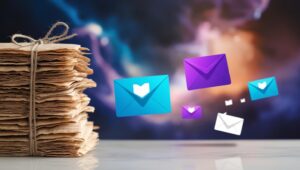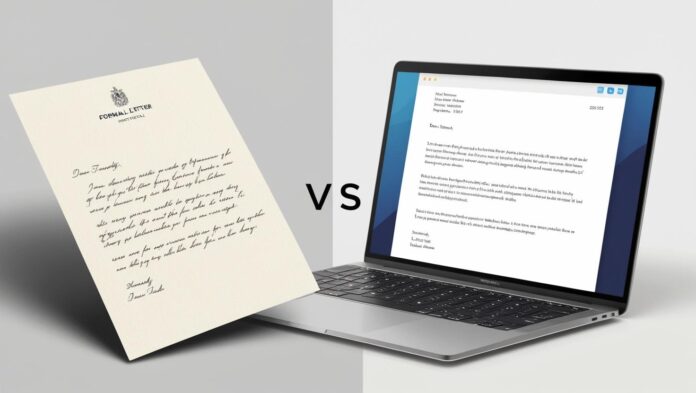In the fast-paced digital age, email has become an indispensable tool for personal and professional communication. But have you ever wondered how email has seamlessly taken the place of the formal letter? From its evolution to its significance and etiquette, this blog explores why email is often referred to as the modern formal letter.
A Brief History: From Quill to Keyboard
Before email, formal communication relied heavily on handwritten or typewritten letters. Whether it was correspondence between businesses or personal messages, these letters adhered to specific structures, tones, and formats. The advent of email in the 1970s revolutionized communication, offering a quicker, more efficient way to exchange information while retaining many characteristics of formal letters.
Over time, email has evolved to accommodate diverse needs—from casual exchanges to high-stakes professional communications. Today, it’s the cornerstone of formal interactions, shaping how we connect in the digital era.

Why Email is the Modern Formal Letter
- Structured Format: Emails, like formal letters, follow a specific structure—a subject line, salutation, body, closing, and signature. This format ensures clarity and professionalism.
- Documentation: Just as formal letters served as official records, emails provide a digital trail. They are timestamped, easily retrievable, and widely accepted as proof in legal and professional matters.
- Professional Tone: Emails often employ a tone of formality, especially in corporate or official communications. Proper grammar, punctuation, and vocabulary play a significant role in conveying professionalism.
- Customization and Personalization: With templates and tools, emails can be tailored for specific recipients or audiences, akin to customizing letters for individual purposes.
- Accessibility and Speed: Unlike traditional letters that required physical delivery, emails ensure instant communication, making them more efficient while maintaining the essence of formal exchange.
The Role of Etiquette in Email Communication
Just as formal letters had rules of etiquette, email communication demands adherence to specific norms to ensure effectiveness and respect. Here are some key aspects:

- Clear Subject Lines: A precise subject sets the tone for the email and helps recipients prioritize its importance.
- Polite Salutations and Closures: Begin with a courteous greeting and end with an appropriate closing, such as “Sincerely” or “Best Regards.”
- Concise and Organized Content: Stick to the point and use paragraphs or bullet points to organize information for easy reading.
- Proofreading: Errors in grammar or spelling can compromise professionalism. Always proofread before hitting send.
- Timely Responses: Prompt replies reflect respect for the sender’s time and enhance communication efficiency.
Email vs. Traditional Letters: Key Differences
While email mirrors many aspects of formal letters, the two have notable differences:
- Medium: Emails are digital, while letters are physical documents.
- Speed: Emails are instantaneous, whereas letters involve time for delivery.
- Interactivity: Email allows quick back-and-forth communication, unlike traditional letters.
- Attachments: Emails enable the inclusion of multimedia and documents, adding versatility to their functionality.
The Impact of Email on Modern Communication
Emails have democratized communication by making it more accessible and inclusive. They bridge geographical barriers and empower businesses, governments, and individuals to communicate effortlessly. Whether sending an official proposal, applying for a job, or following up with a colleague, email is the preferred mode of formal interaction.
Moreover, email’s integration with other tools like calendars, task managers, and collaboration platforms enhances productivity, making it an essential component of modern workflows.
Conclusion: The Future of Formal Communication

Email’s journey from a novel technology to the cornerstone of professional communication underscores its importance as the modern formal letter. As technology evolves, so will email, integrating innovations like AI-driven personalization and enhanced security features. Yet, its essence as a formal, structured, and efficient medium of communication will remain unchanged.
So, the next time you draft an email, remember: you’re continuing the legacy of the formal letter, redefined for the digital age.
The Evolution of Languages Through Centuries: A Journey to the Oldest Language in Asia











